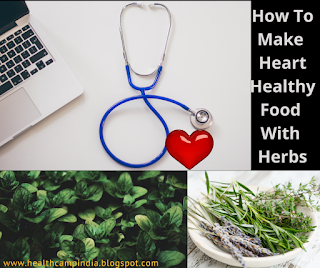Heart disease is the leading cause of death in the majority of the countries. Heart disease can lead to a heart attack, or even a stroke.
It can strike suddenly and require you to make decisions quickly. Often a lifestyle change to eating heart healthy foods is part of this decision making process. Eating well by following a healthy diet can lower your risk of heart disease.
Did you know that fresh herbs can be used to make many foods heart-healthy and delicious when they replace sugar, salt, and trans fats? The Ancient text, Genesis 1:29, tells us that our Creator, God gave us every herb yielding seed. “And God said, “Behold, I have given you every herb yielding seed that is on the face of all the earth, and every tree with seed in its fruit.
You shall have them for food.” Adding herbs to foods will give you delicious ways to fight heart disease, stroke, high blood pressure, high cholesterol, and diabetes.
If you are new to cooking with herbs, you can start with a few of the basic dishes such as chicken with tarragon, guacamole with cilantro and chili, grilled cod or tuna with salsa verde (a delicious Mexican green salsa made with roasted tomatillos, onion, cilantro leaves, lime juice and sugar), and roast potatoes with rosemary and garlic.
Once you begin to appreciate how the blending of flavors affects a dish, you will begin to experiment and create combinations to your own taste.
Generally herbs are used to add fragrance and flavor to food rather than to provide the dominant taste.
While robust herbs like sage do not lose their flavors if dried, most herbs are meant to be eaten fresh.
Herbs added early on in cooking process will release their flavor to the food. Dried herbs should be put in at the beginning, and herbs with tough leaves such as rosemary, lavender, thyme, and bay can withstand long cooking.
When you add sprigs of herbs to a dish, remove them before serving. To restore the aroma of herbs in a slow cooking dish stir a few finely chopped leaves into the pan toward the end of cooking process. Strongly flavored herbs, such as mint, tarragon, fennel, can be added at any stage during cooking.
The essential oils of delicate herbs, like basil, dill, cilantro, and lemon balm, soon dissipate when heated. To keep them fresh in taste, texture, and color, add the just before a dish is served.


No comments:
Post a Comment